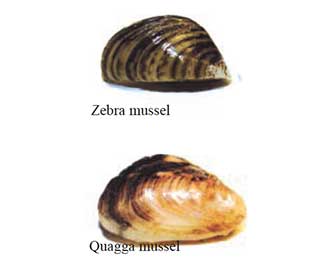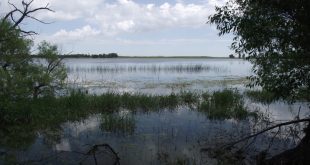This news release went out recently. If you use any of Nebraska’s waters for any purposes, you need to be aware of this:
Invasive Zebra and Quagga Mussels Found in Two South Dakota Reservoirs
LINCOLN – On Nov. 14, a single live adult zebra mussel was discovered attached to a boat dock at the Midway boat ramp on the South Dakota side of Lewis and Clark Lake near Yankton, S.D.
South Dakota Game, Fish and Parks (SDGFP) staff inspected 11 additional boat docks and shorelines and found no additional zebra mussels in or near the lake. Several boats stored at a marina also were inspected and no mussels were found, though many boats already were power-washed for winter storage. SDGFP and the Nebraska Game and Parks Commission have sampled the lake yearly for zebra mussel veligers (larva) and all samples have been negative.
It is likely the discovered mussel came from a contaminated boat that launched near the site the zebra mussel was found. As a result of this discovery, Lewis and Clark Lake is now classified as a “suspect waterbody” for zebra mussels and will remain that way for at least three years if no additional mussels are found.
In September, an invasive quagga mussel was found in Angostura Reservoir in southwest South Dakota. Nebraska has only one documented invasive mussel infestation, in the Offutt Air Force Base Lake in Bellevue. The lake has been closed to motor boats since 2006.
These newly-discovered quagga and zebra mussels in South Dakota increase the need for formal boat inspection programs in South Dakota and Nebraska to reduce the spread of invasive mussels to other water bodies. Both states have regulations intended to prevent the movement of invasive mussels into additional waterbodies, but both have limited funding to deal with invasive species and lack a formal program to inspect watercrafts at all high-risk reservoirs.
Staff from both states will discuss this issue and develop a future action plan for Lewis and Clark Lake.
For more information, visit the Nebraska Invasive Species Program at neinvasives.com.
Now let me add some comments. First of all, neither Angostura nor Lewis & Clark Reservoir are INFESTED with zebra or quagga mussels to our knowledge, at this time. Take the news exactly as it is stated–singular, one, O-N-E, 1, mussel was found at each body of water. Sampling and monitoring for invasive mussel species has been ongoing and this is the first time anything has been found on either of those South Dakota waters. In the case of Lewis & Clark Reservoir, I know Nebraska personnel among others have been sampling for exotic mussel species over the past several years and samples have been collected in the areas where an introduction is most likely to occur. To this point, nothing has been found. With the recent discoveries, these reservoirs will be monitored and sampled even more in the future. Hope for the best, that these are isolated cases and that there are not established populations present already, but be prepared for the worst.
That is exactly why it is important that all users of our water resources are aware of this–you should expect that there is the potential to transfer unwanted, invasive, exotic species from every body of water. You should treat all of your gear, especially watercraft, as if there are aquatic invasive species present.
Lewis & Clark Reservoir is Nebraska border water. The one zebra mussel discovered there was an adult found in the main marina on the South Dakota side of Lewis & Clark. Because of the location, the fact that it is border water and that there are a lot of folks from a lot of places that travel there, Lewis & Clark is a high-risk waterbody for aquatic invasive species, but this is the first zebra mussel that has been found there.
I understand the fatalistic attitude that eventually these unwanted mussels are going to infest every body of water from one end of the continent to the other. The larvae are microscopic and can be unknowingly transported from one body of water to another. I will also tell you that once zebra or quagga mussels become established, there is likely nothing that will ever be done to eliminate them. If they become established, about the only thing that can be hoped for is to live with them, to manage them. I in no way believe that is inevitable and we need to do everything possible to prevent the spread of invasive species. If we do not do that, we are shirking our responsibility as stewards of our natural resources. I believe EVERY USER shares a stake in this, and that is why it is critical that everyone is aware of the threat and knows what they, each individual, needs to do about it.
In case you are still not “up to speed” on this, here is a fact sheet with more information, Zebra-Quagga-Mussels-Fact-sheet .
And take a couple minutes to watch this video, DO IT!
 Nebraskaland Magazine
Nebraskaland Magazine





